What is the New Century Version (NCV) Bible?
Aaron Lewendon - Category Manager
Finding the right Bible isn’t easy. There are dozens of translations and hundreds of editions to choose from. Our new series of guides is here to answer your questions about the different Bibles on offer today.

A revision of the International Children’s Bible, the New Century Version (NCV) Bible is clear to read and easily understood. A Bible for all ages and all readers. By basing itself on a translation made for children, the NCV is able to carry over a sense of simplicity within the text.
As well as the ICB, the NCV has its roots in the English Version for the Deaf (EVD) Bible and the Easy-to-Read (ERV) Bible translations.
Also known as The Youth BIble and The Everyday Bible, the NCV’s ease has contributed to its wide popularity with readers. That the NCV still manages to be a relatively accurate translation of the Bible stands as a testament to the fine line it manages to walk.
The ideal Bible for new Christians and teens.
History of the NCV Bible
Almost every English language Bible is based on another Bible that came before it.
For the NCV that Bible is the English Version for the Deaf Bible (EVD). Also known as the East-to-Read (ERV) Bible, the text was designed for people whose first language was English sign language. The sentences in it are shorter. The vocabulary is simpler.
With the project beginning in 1973, the EVD New Testament was released five years later in 1978. This edition was then revised by another publisher in 1983 and called the International Children’s Bible New Testament. It wasn’t until 1986 that a full-bible edition was available. This was when the title New Century Version was properly adopted.
In 1991 a gender-neutral edition of the NCV was released, and that edition has been used in circulation ever since.
How Was the NCV Translated?
A team of 50 scholars and translators assembled to make the NCV translation. Amongst these were experts who had a hand in creating some of the most-read Bible translations to date, including the New International Version (NIV) Bible, the New King James Version (NKJV) Bible and the New American Standard Version (NASB) Bible.
In ensuring a degree of accuracy with the translation, the assigned scholars turned to trusted texts such as the United Bible Societies’ Greek Text and Hebrew editions of the Septuagint.
The translation method employed for the NCV is called Dynamic Equivalence. Pioneered in the creation of the Good News Bible, Dynamic Equivalence was introduced by linguist and scholar Eugene Nida from the American Bible Society. Also known as Functional Equivalence, Dynamic Equivalence sought to communicate the sense, or message, of a text. Eugene Nida described the essential feature of Dynamic Equivalence as:
“[The] quality of a translation in which the message of the original text has been so transported into the receptor language that the response of the receptor is essentially like that of the original receptors."
If an original language speaker heard the original text and you heard the translation of that text, both of you would still come away with the same impression. The same response and the same understanding. For a text that stretches back thousands of years, this is a big accomplishment. The gap between what ancient Israelites understand and modern readers today understand is huge.
The goal of Dynamic Equivalence is to shrink that gap as much as possible.
To bring the ancient scriptures' core message to today's reader.
That Dynamic Equivalence was employed in the NCV shows the priorities in translating the text. There was the desire for a bible that could be easily read but still retained fidelity to the Biblical scriptures.
How Accurate is the NCV Bible?
After seeing how the NCV Bible was translated, it is now worth asking how accurate it is.
Before answering, it does help to know a couple more key terms used when discussing how accurate a Bible is. On the occasion that someone discusses Bible Translation accuracy, they will most likely draw a line in the sand between Bibles which are “word-for-word” and Bibles which are “thought-for-thought”.
Word-for-word Bibles present as directly as possible the text in the original scriptures. As the scriptures come from a culture far removed from our own, their texts are harder to understand and so any direct translations themselves require of the reader a sharp eye and working knowledge of the context from which the Bible came.
Thought-for-thought Bibles operate under a different approach. They use a greater level of textual interpretation throughout their translation process. This includes taking in wider contexts and meanings as a guide to what the original text meant and how that text would appear in today’s language.
If word-for-word is akin to Google Translate, operating with as little human interpretation as possible, then thought-for-thought is like a poem translated from another language, where meaning and form carry greater emphasis.
Where does the NCV Bible sit on the spectrum?
The NCV Bible was translated in part using a process called Dynamic Equivalence. This is where the nearest natural word choice to the source is chosen so that the translation’s reader understands the central meaning of the text. It’s a translation in spirit as much as in word.
This makes the NCV, and the ICB with it, a thought-for-thought Bible.
It is reasonably accurate to the original scriptures, but not to the extent that that NIV or KJV is.
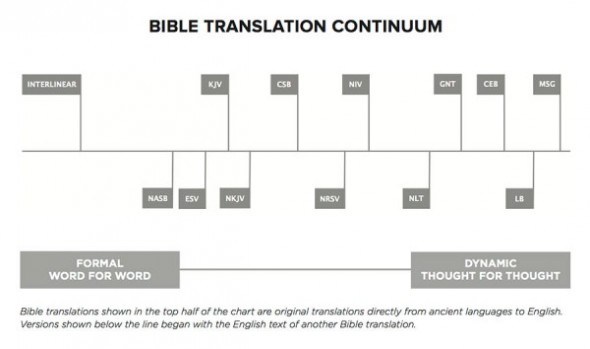
How Easy Is the NCV To Read?
The NCV is written at about a 5th Grade Reading Level. Two grades more sophisticated that the ICB which preceded it. Grade 5 means readers from the ages of 10 or 11 should be able to confidently read the majority of The NCV Bible text and understand what it means.
What determines this level is the total number of unique words, as well as sentence length and the length of the words themselves. Other grammatical features also carry weight in the score. The greater the complexity, the higher the score. The reading level doesn’t take into account any understanding of a text's history and context. Only the words and grammar.
As an example, this sentence you are currently reading would score at a Grade Nine on the readability test.
This sentence would be at Grade Two.
Common Uses
More often than not, the NCV is the translation of choice for youth editions. This is because a lot of the more obscure terms and languages of other Bible translations are swapped out for more common expressions. If your goal is to encourage younger readers, then a certain number of textual hurdles are best removed.
The NCV also fits well as a youth Bible owing to the fact it’s a more complex revision of a Bible tailored to children.
Different Editions
As mentioned earlier, the NCV has a few related Bible editions. The main one of these being its predecessor, the International Children’s Bible. A 3rd reading grade Bible with a conservative leaning.
The NCV itself has only undergone one major change, which was a move towards gender-neutral language in 1991.
Where words in the original scriptures could mean either a specific gender or mixed groups of people, the translation would choose the side of wider relatability. Words like ‘people’ and ‘man’ can both be translations of the Greek word anthropoi (this is where we get words like Anthropology - the study of people). When faced with anthropoi, the NCV would, for example, choose to say ‘people’ whenever possible.
Example Verses
“God loved the world so much that he gave his one and only Son so that whoever believes in him may not be lost, but have eternal life.” - John 3:16
“I say this because I know what I am planning for you,” says the Lord. “I have good plans for you, not plans to hurt you. I will give you hope and a good future.” - Jeremiah 29:11
"Be kind and loving to each other, and forgive each other just as God forgave you in Christ." - Ephesians 4:32
Versions You Can Buy Today
NCV Youth Bible
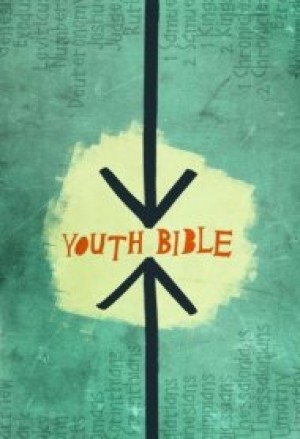
First released in 1993 this Anglicised Youth Bible is perfect for teenagers getting to grips with the word of God. The NCV text is easy to read and understand, providing an invaluable resource for young Christians in the 21st Century.
NCV Youth Bible Sunburst
The NCV (New Century Version) Youth Bible gives your teens a directly relevant modern English translation Bible. Plus, over 470 real life stories and hundreds of background Bible facts that connect with the hearts and minds of teenagers in schools, colleges, universities, home and church.
NCV Grace For The Moment Daily Bible: Paperback
Beloved pastor, Max Lucado, invites you to immerse yourself in grace as you spend a few moments each day in God's Word. Excerpts from Max's works, on topics that are relevant to your life, help you connect daily with the Savior and experience the fullness of His grace.
Frequently Asked Questions
Is the NCV Bible accurate?
Whilst not a paraphrase, the NCV Bible is a thought-for-thought Bible. This means there is a degree of interpretation in what he translation means, and how to carry that meaning across in a more modern language.
Is the NCV Bible Catholic?
Neither the NCV nor the ICB are Catholic Bible translations.
Other Bible Translations
Click on any of the images below to learn all about the stories behind some of the world's most widely-read Bible translations.







.jpg)
Latest Blogs
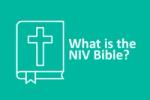
Bible
What is the New International Version (NIV) Bible?
Finding the right Bible isn’t easy. There are dozens of translations and hundreds of editions to choose from. Our new series of guides is here to answer your questions about the different Bibles on offer today.
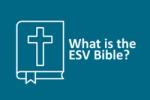
Bible
What is the English Standard Version (ESV) Bible?
Finding the right Bible isn’t easy. There are dozens of translations and hundreds of editions to choose from. Our new series of guides is here to answer your questions about the different Bibles on offer today.

Featured
What is the King James Version (KJV) Bible?
Finding the right Bible isn’t easy. There are dozens of translations and hundreds of editions to choose from. Our new series of guides is here to answer your questions about the different Bibles on offer today.

Featured
What is the New Living Translation (NLT) Bible?
Finding the right Bible isn’t easy. There are dozens of translations and hundreds of editions to choose from. Our new series of guides is here to answer your questions about the different Bibles on offer today.
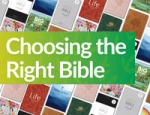
Bible
Choosing The Right Bible
With more than 20 English Language translations each available in 25 or more different editions the choice of Bibles excites and bewilders. Choosing the right Bible for you is important - even if you already have more than one.

Spiritual Growth
LENT COURSES - How to choose the right one for you
Long overshadowed by the celebrations of Easter Sunday, Lent is being rediscovered as a sacred time of reflection and renewal in its own right and a time of preparation for the joyous seasonal finale.
